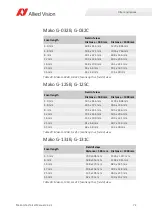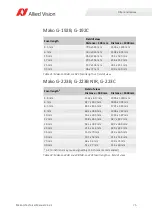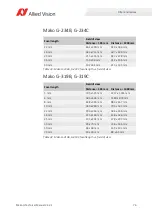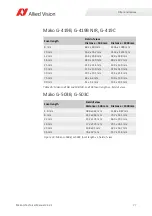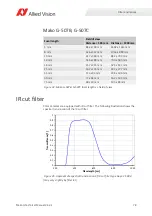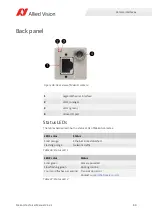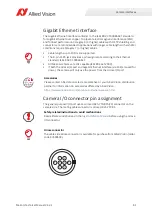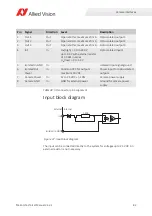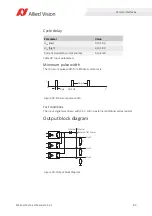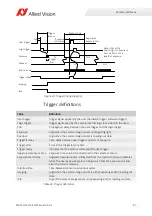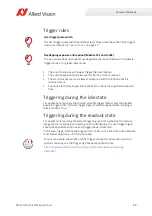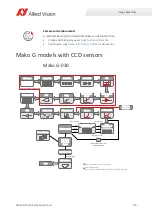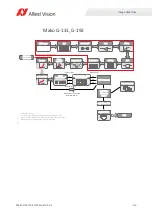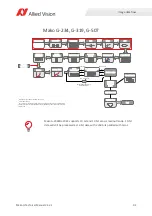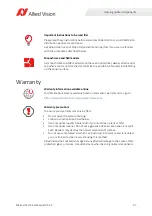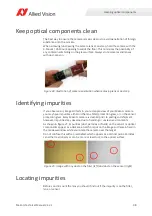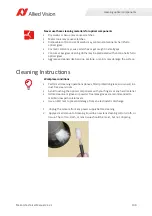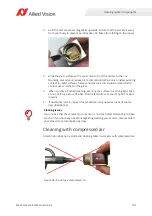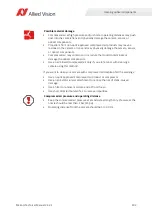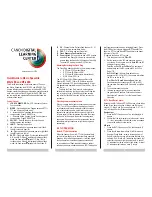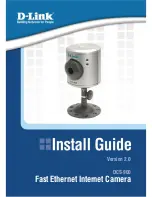
Camera interfaces
88
Mako G Technical Manual V4.2.2
Trigger rules
•
The end of exposure will always trigger the next readout.
•
The end of exposure must always end after the current readout.
•
The start of exposure must always correspond with the interline time if
readout is true.
•
Exposure start delay equals the readout time minus the registered exposure
time.
Triggering during the idle state
For applications requiring the shortest possible trigger latency and the smallest
possible trigger jitter, the user trigger signal should be applied when imaging is
false and idle is true.
Triggering during the readout state
For applications requiring the fastest triggering cycle time whereby the camera
image sensor is exposing and reading out simultaneously, the user trigger signal
should be applied as soon as a valid trigger ready is detected.
In this case, trigger latency and trigger jitter can be up to 1 line time since exposure
must always begin on an Interline boundary.
User trigger pulse width
The user trigger pulse width should be at least three times the width of the trigger
latency as indicated in
Overlapping exposure and readout (Mako G-131 and G-192)
The e2v sensor does not support overlapped exposure and readout in hardware
trigger mode or in global reset mode.
For a more detailed description of the trigger concept for advanced users and
special scenarios, see the Triggering Concept application note:
https://www.alliedvision.com/en/support/technical-papers-knowledge-
base.html
i

